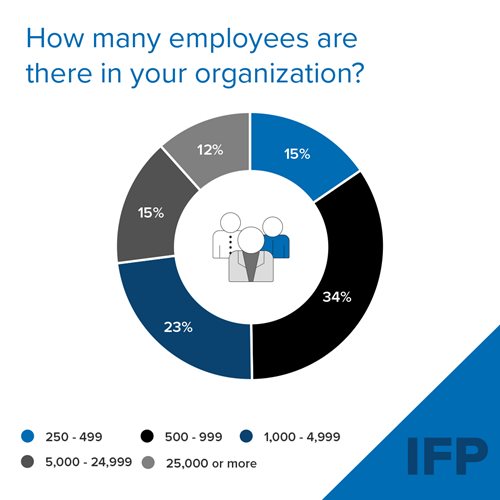Enterprise resource planning (ERP) is a growing and increasingly critical industry for businesses. By 2025, the ERP software market size is forecast to reach $100.7 billion, according to Statista, as more and more organizations look to consolidate and integrate their disparate processes and operations. And, as digital transformation initiatives continue to take flight, ERP technologies have a central role to play in harnessing data and giving organizations a competitive edge – so much so that, according to research from Gartner, 64% of finance firms are planning to implement it within the next three years.
But like any forward-thinking technological initiative, implementing ERP isn’t without its challenges. Around 50% of ERP implementation projects fail the first time round, 64% go over budget and 30% take longer than initially expected.
With adopting ERP an organizational imperative for organizations that want to make their operations future-proof and flexible, and millions of dollars potentially on the line for failure, how can finance leaders learn from their counterparts and prepare for the risks and challenges that have derailed so many other projects?
To find out, we surveyed 207 professionals, from managers all the way up to the C-Suite, on the success (and failures) of their ERP implementation projects. These respondents were based across both the US and the UK and worked in various industries, including finance, manufacturing, technology, health, transport and education. They represented a range of company sizes, from smaller businesses with 250-499 employees all the way up to large corporations with 25,000+.

Data and change management are the biggest challenges of ERP implementation
When asked to select all the challenges and risks they encountered in ERP implementation, data quality (44%) and data integration (41%) came out on top as the biggest problem areas.
This is no surprise, as consolidating data from multiple data sets and departments – many that deal with the same customers and transactions in different formats – can lead to confusion, duplication and poor data hygiene.
Learn more: 8 Challenges of ERP Implementation (and How to Ultimately Win)
Configuring software (37%) was the third biggest challenge according to our respondents while, in line with the results of our research into digital transformation initiatives, internal resistance to change was an obstacle for over a third (36%) of our respondents. With successful ERP implementation essentially consolidating and changing cross-departmental processes throughout the business, it’s entirely likely that some teams in your organization won’t be happy with the transition unless you involve them and make it clear how they’ll benefit.
Expect the unexpected
Over a third (36%) of respondents incurred extra costs during ERP implementation – which matches up with the 28% of IT leaders who reported ‘expensive or unforeseen costs’ in our digital transformation survey. Both results present a clear warning for leaders championing transformation initiatives – expect the unexpected.
In a similar vein, inadequate testing (28%) to ensure ERP systems are operational upon launch, lack of planning (23%) to accurately map out the implementation process and not understanding its key features (19%) show the cost of not investing the time and thought required to make your implementation a success.
What lessons can we learn from previous ERP implementations?
When asked to identify the biggest way they could maximize the value of their ERP solution, 37% of our respondents claimed more training was the key – around twice as many as ensuring users are comfortable with the platform (20%) and integrating it with other systems (19%). With just 19% previously selecting a lack of understanding of its key features as a challenge, this suggests that this training applies to end users – perhaps in relation to change management and software configuration issues.
The cloud is playing a key role in ERP success
To understand their plans moving forward and how they plan to further optimize their ERP solutions, we asked our respondents to identify which technologies they plan to use to augment their ERP.
Despite being able to pick all options that applied, the overwhelming majority (71%) are looking to the cloud to optimize their ERP solution. With cloud computing a central component of enabling digital transformation, the logic here may be in looking for the best way to integrate ERP successfully alongside other technologies, and aligns with the increasing popularity cloud-based ERP systems.
To improve data management, analysis and forecasting, 37% of our respondents are planning to incorporate predictive analytics along with AI (33%) and machine learning (21%). Improving security is also a key focus area, with 29% looking to augment their systems with blockchain.
The benefits of implementing these technologies are widespread. Reducing operational costs, improving agility, enhancing forecast accuracy, optimizing resources and creating efficiency gains all received around 50% of votes from our respondents, with adopting the cloud likely the key to accomplishing these, while improving UX was a perceived benefit for just over a quarter (26%).
Access the State of Enterprise Resource Planning research report
For more detailed insights into the state of ERP adoption, including more statistics on the challenges of implementation, investment priorities going forward and the popularity of different ERP models, download the full report here.
The State of ERP in Finance & Other Sectors
How is ERP software transforming a post-pandemic world? And what are the risks of implementation?
Learn More ifp.ClickDetails"Access the latest business knowledge in Finance
Get Access



Comments
Join the conversation...